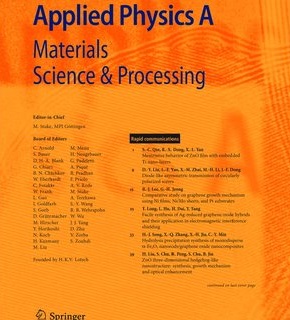Experimental and theoretical study on the natural corrosion inhibitory properties of 3-Oxocostusic acid in a 1.0 M HNO3 solution
Abstract
Weight-loss measurements and electrochemical techniques (potentiodynamic polarization and electrochemical impedance spectroscopy (EIS)) were used to evaluate the inhibitory effectof 3-Oxocostusic acid (OA) compound on the corrosion of copper in 1.0 M nitric acid. For the highest inhibitor concentration tested here the inhibition efficiency reached 95.6% after 4 h of immersion at 45˚C. The results demonstrated that 3-Oxocostusic acid is a effective green inhibitor green inhibitor, and the inhibition efficiency increasing with both OA concentration and with increasing temperature. Notably, copper dissolution decreased with rising temperature in the presence of OA. The inhibitor adsorption on the copper surface followed the Langmuir adsorption isotherm on the surface of copper, with a high regression coefficient value. The entropy (ΔS#) and enthalpy (ΔH#) of activation were calculated and analyzed. The thermodynamic adsorption free energy (ΔGoads) value indicated that both physical and chemical adsorption of 3-Oxocostusic acid molecule on copper surface. Electrochemical polarization studies revealed that 3-Oxocostusic acid acts as mixed type inhibitor. EIS measurements exhibited one capacitive loop indicating that the corrosion reaction is controlled by the charge transfer process. The findings confirmed that copper was effectively protected against corrosion in acidic environments by 3-Oxocostusic acid. The experimental results and quantum chemical calculations provided strong evidence supporting the effectiveness of the OA compound as a copper inhibitor in acidic solutions. The consistency across multiple analytical methods validates the reliability of OA in protecting copper against corrosion in acidic environments.

 求助内容:
求助内容: 应助结果提醒方式:
应助结果提醒方式:


